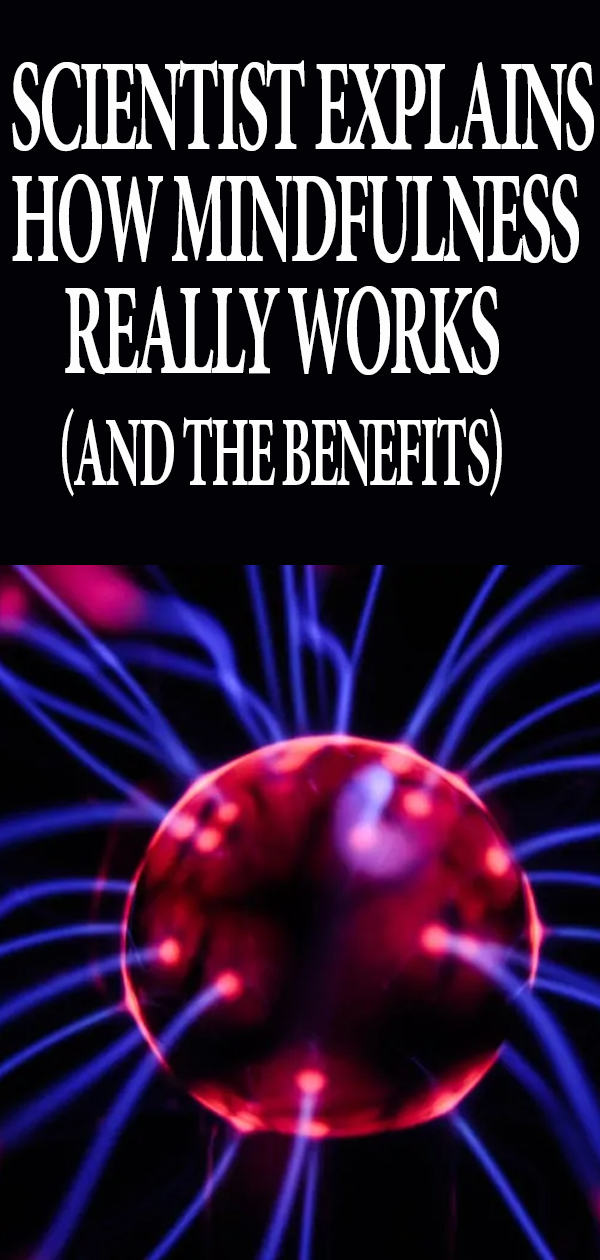(This is part three of a 3-part series discussing the history, culture, and meaning of mindfulness.)
Many who have wandered about the vast field of mindfulness will agree that getting started can be confusing and frustrating. One reason for this is the overwhelming amount of information.
Google ‘mindfulness’ and you get 219 million – that’s 219,000,000 – search results. (Oh, and don’t forget to look at those oh-so-inconspicuous ads placed at the top and bottom of each page.) According to market research data, there are over 1,000 meditation smartphone apps.
Meditation and mindfulness books, CDs, DVDs, and other media bring in a whopping $112 million annually. From its humble, 2,500-year-old roots, mindfulness has become a multibillion-dollar enterprise.
Then there’s the issue of what kind of mindfulness to practice. We won’t find much help here, either. It’s all-too-common to find secular people claiming that meditation is “too religious”; religious people claiming that it’s “too secular,” and spiritual people being too chill to get involved in the conflict.
Here’S Are Examples Of Groups Challenging The Concept Mindfulness
Case in point: just this month, a group of Catholic Spanish bishops issued a statement in opposition to mindfulness practices. Why? Because the practice doesn’t happen to have roots in the “The Church.” Nevermind that many famous Catholic priests have traveled to Japan to study Zen Buddhism.
So…
Information overload? Check.
Religious intolerance? Check.
Oh, and then there are the hordes who claim to be mindfulness experts. What makes qualifications do they have? Meh, they said so. Maybe they took a class on Coursera or EdX. That’s enough, isn’t it?
So…
Potentially unqualified teachers? Check.
Again, it’s a confusing and frustrating place. Rather ironic considering that mindfulness was originally conceived for, above everything else, removing the innate confusion from the mind. Someone tell the bishops.
So, how does mindfulness really work? Well, despite what you may have heard, there is a common group among most – if not all – schools of mindfulness practice.
To illustrate this point, we’re going to discuss one scientist’s remarkable journey.
We’ll also discuss the differences between mindfulness and meditation. Let us begin by describing the “default mode” of the brain and mind.
Our Crazy Default Mode
Any technicalities on mindfulness and meditation will be of little benefit if you don’t understand mind’s default mode. Why is such an education necessary? Three reasons. (1) The “default mode” is established science that (2) gives us insight into the inherently abnormal mental state, which (3) motivates us to seek an end to mental and emotional woes.
To put it bluntly: this chatterbox that we call mind is the cause of all of our suffering. This is not only a spiritual declaration but an empirical one that’s roundly accepted by psychologists and other mental health experts. Not to mention that the truth of which is self-evident.
Just ask yourself this question: Is my thinking mind more of a help or a hindrance?
Think about this.
Even when there’s a relatively peaceful environment, the mind will still conjure up feelings of boredom or restlessness. To satisfy the mind’s constant need for more stimulus, we may pick up a magazine, hop on social media, play a mobile game, or indulge in some unhealthy snack. All because this defunct mind of ours refuses contentment.
The Negativity Bias
The thinking mind never shuts up. Worse, the things that it “says” are mostly negative. Psychology has long established the tendency of the mind to lean negative – coining it the negativity bias.
In a paper published in the journal Personality and Social Psychology Review, psychologists and professors Paul Rozin and Edward B. Royzman state that negativity bias manifests in four ways. These four manifestations are as follows:
1) Negative potency: Negative entities (e.g., events, objects, traits) are stronger than positive entities.
2) Negativity dominance: Combinations of equal parts negative and positive events yields a result that is more negative than positive.
3) Negative differentiation: The mental constructs of negative stimuli are more complex and varied than positive stimuli.
4) Steeper effects over time: The perceived negative nature of events grows disproportionately compared to positive events.
Our default mode is the reason why people abuse, maim, kill, and abandon. Wars have been started, people burned at the stake, and tyrants bequeathed with absolute power. Humans rape their Earth, pollute their oceans, and threaten their own habitat. We owe all of this madness to unchecked impulse. We owe all of this madness to the brain’s default network.
The French mathematician Blaise Pascale summed up the human condition rather accurately when he said made the statement “All of humanity’s problems stem from man’s inability to sit quietly in a room alone.”
If there is ever a time for man to become a more mindful creature, it’s now.
How Mindfulness Really Works: The Commonalities
First, we must understand that mindfulness and meditation are not necessarily mutually inclusive. While there is such a practice of mindfulness meditation, there is much more to the holistic practice of mindfulness. Let us start off with the common threads woven between seemingly all schools of mindfulness.
If you’ve ever read up on or practiced mindfulness, you’ve probably got a decent understanding of how it works. At least in theory. Indeed, most mindfulness systems share a set of common characteristics. These are:
1) Non-Judgmental Observation
Nonjudgmental observation in mindfulness is the ability of the mind to observe whatever’s happening in mind without criticism or cogitation. We observe the experiences of mind without any preconceived notions.
Think of a scientist viewing something under a microscope. During an experiment, the scientist is merely observing. He’s not forming judgments or wishing for a different outcome.
2) Acceptance
In the context of mindfulness, acceptance means responding to emotions without controlling, judging, or reacting to the experience. This is especially important for unpleasant mental states.
We must also freely admit to when we’re feeling anger, aversion, fear, jealousy, and so forth. Only then can we learn to see past the illusions of the mind.
3) Neutrality
Another way to think of mindfulness is neutral watchfulness. It’s neutral because we don’t get hung up on either positive or negative mind states. When mindful, we treat all experiences the same, including feelings and thoughts. We do not repress anything – “good” or “bad.”
4) Present-Moment Awareness
Mindfulness takes place in the here and now. This means observing whatever is taking place in the present moment. Furthermore, this awareness of the present moment is unceasing and constant.
Let’s say that you’re thinking about your favorite food. When practicing present-moment awareness, you are aware that you are thinking of your favorite food. You are observing the activities of the mind in the present-moment, non-conceptually.
How Mindfulness Really Works: The Missing Pieces
“A veil was lifted. All of a sudden, there was recognition that I’m not my thoughts. Everyone always says it, but I never felt it. It turns out I’m actually not the voice in my “head” that says stuff. That’s separate from me. Immediately after was the recognition ‘I am awareness.’” – Gary Weber, Ph.D., Happiness Beyond Thought, A Practical Guide to Awakening
Dr. Gary Weber, Ph.D., is just about as rational of a person as you’re going to find. He’s got a doctorate in material sciences, was a corporate executive for General Electric, served as an officer in the U.S. Navy, and is on the board of Carnegie Mellon University’s Research Institute.
He’s also accumulated over 30,000 hours of meditation and yoga training, studied with two Zen Roshis, and was a student of the Indian guru Ramana Maharshi. If anyone knows the correct way to practice mindfulness, it’s him.
According to Weber, two vital components for mindfulness practice, often missing from some teachings are concentration and detachment.
Final Thoughts About Mindfulness
Astoundingly, very few philosophies of mindfulness emphasize the importance of stable attention and detachment. First, let us define concentration and detachment in the context of mindfulness practice.
Concentration, or ‘stable attention,’ is the ability to direct your mental efforts to the here-and-now. Practicing mindfulness without stable attention often leads to feelings of frustration and overwhelm. When we’re mindful and stable with our attention, things go much smoother. It is also very important that we not be so hard ourselves in these efforts. The word ‘concentration’ often conjures up images of furrowed brows and red faces. But stable attention needn’t be so difficult. We must allow ease and relaxation to guide our attentional efforts.
Detachment is like viewing your sensory experiences from a third-person perspective. The “real you” is the awareness floating around the mind. You are not your mind or your sense perceptions. Need proof? Do you ever sit back and watch the voice in your head? Do you ever wonder why it doesn’t shut up?
This is important, so please pay close attention.
You can clearly observe this voice. And you know that you’re not the one thinking all these nasty things. Why would you do that to yourself?
Answer: you wouldn’t.
So who are you? You are the one who realizes that. You are this continual awareness that’s capable of sitting back and watching as your mind and emotions go nuts.
This is mindfulness at its core.


